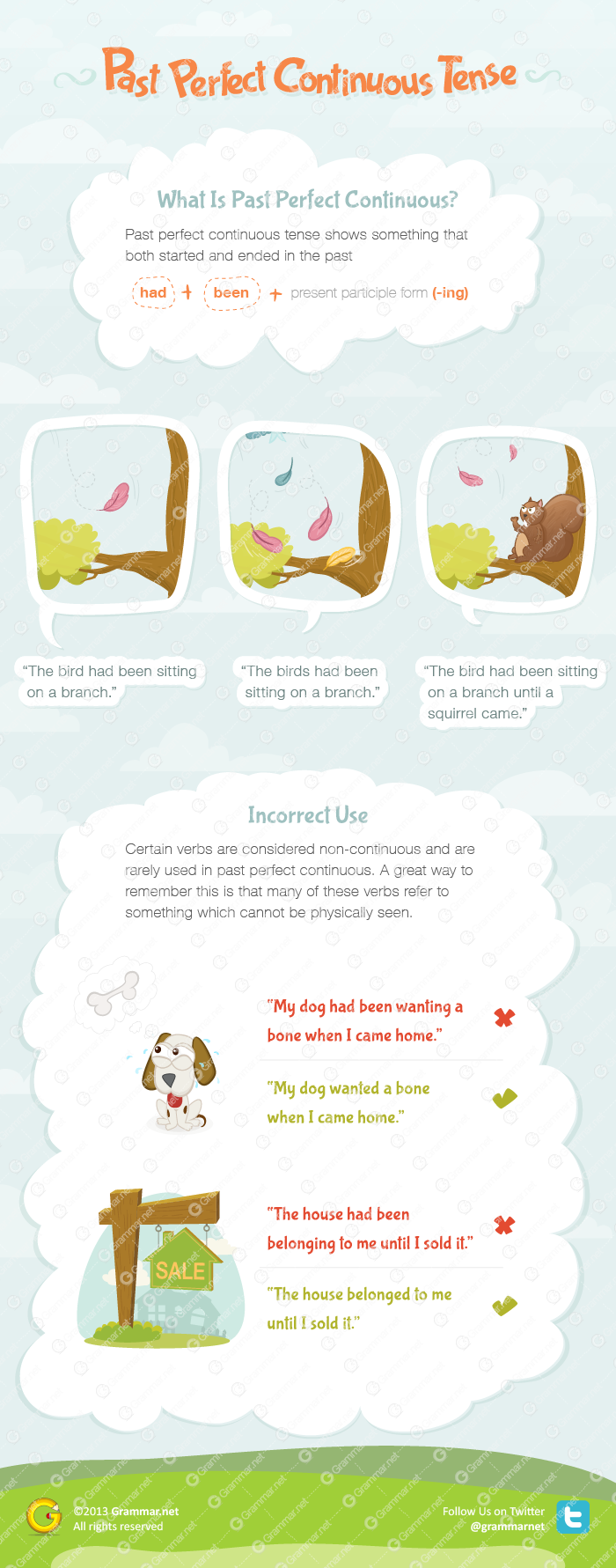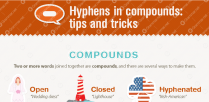Despite the frightful name, past perfect continuous tense is simple to understand, and it is fairly easy to use.
To download high-resolution poster click here
What Is Past Perfect Continuous?
Past perfect continuous tense, also called past perfect progressive, shows something that both started and ended in the past using the helper “had” with “been” and the present participle form (-ing) of any continuous verb. Two actions that occurred in the past are frequently illustrated against each other to show cause and effect or timing.
How To Use It
The description may sound as horrible and confusing as the name, but it is actually not hard to use. Keep in mind that only continuous verbs work. The infographic and some past perfect continuous examples in their simplest form should restore confidence in English grammar for those who may feel lost.
“The bird had been sitting on a branch.” The sentence hints that the bird is no longer there.
“The birds had been sitting on a branch.” It works the same way for plural nouns.
“The bird had been sitting on a branch until a squirrel came.” As mentioned, past perfect continuous often compares two past actions against each other. We know that the squirrel caused the bird to fly away.
“I had been sleeping when the alarm went off.”
“The sun had been shining before the sky became cloudy.”
“Frank had been walking when he smelled cheeseburgers.”
Incorrect Use
Certain verbs are considered non-continuous and are rarely used in past perfect continuous, such as possessive and abstract verbs, as well as verbs that deal with emotion. A great way to remember this is that many of these verbs refer to something which cannot be physically seen.
“My dog had been wanting a bone when I came home.” This is incorrect.
“My dog wanted a bone when I came home.” This is correct.
“The house had been belonging to me until I sold it.” This is incorrect.
“The house belonged to me until I sold it.” This is correct.
“Jim had been liking our walk until he tripped.” This is incorrect.
“Jim liked our walk until he tripped.” This is correct.
Depending on how they are being used, some mixed verbs can serve as both continuous and non-continuous verbs. Can you think of any examples?



![10 Idioms about knowledge [infographic]](https://www.grammar.net/wp-content/uploads/2013/03/idioms-about-knowledge_watermarked-308x95.png)
![10 Idioms about Love [infographic]](https://www.grammar.net/wp-content/uploads/2013/03/Love-Idioms_watermarked-308x95.png)


